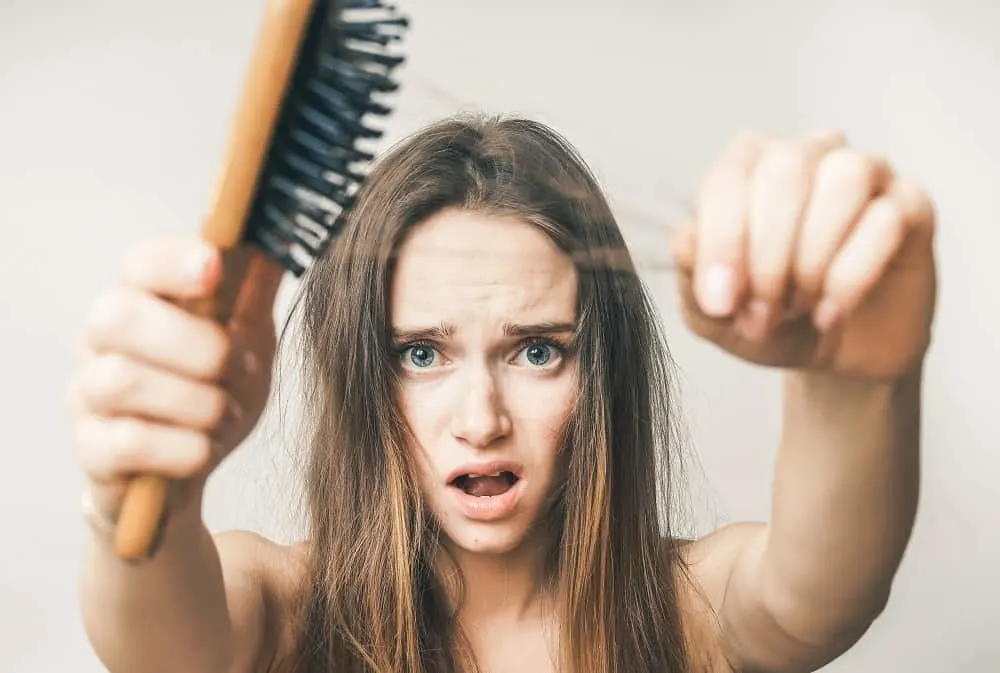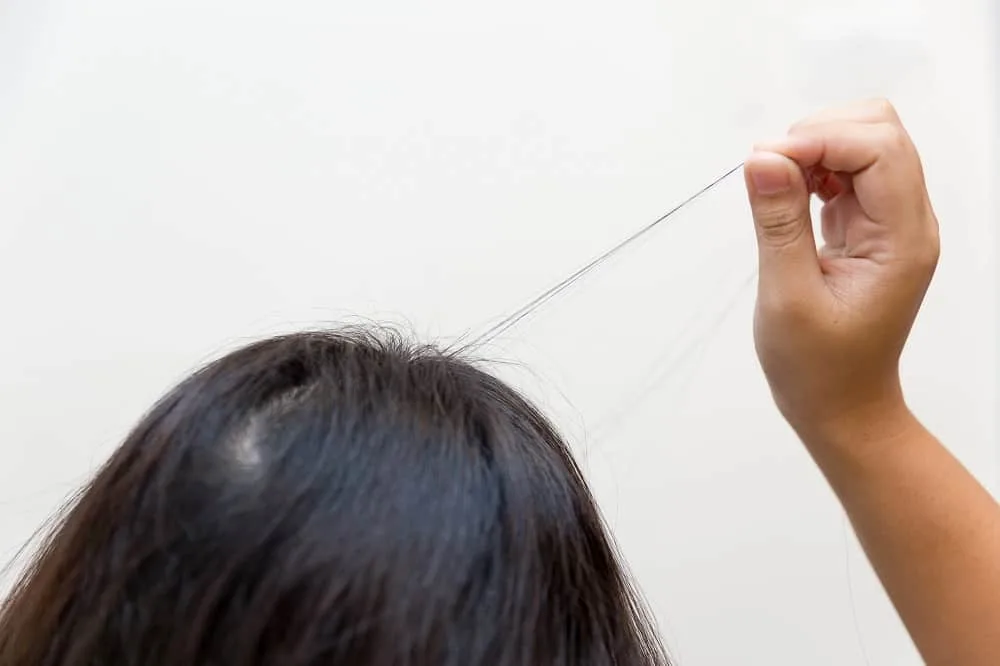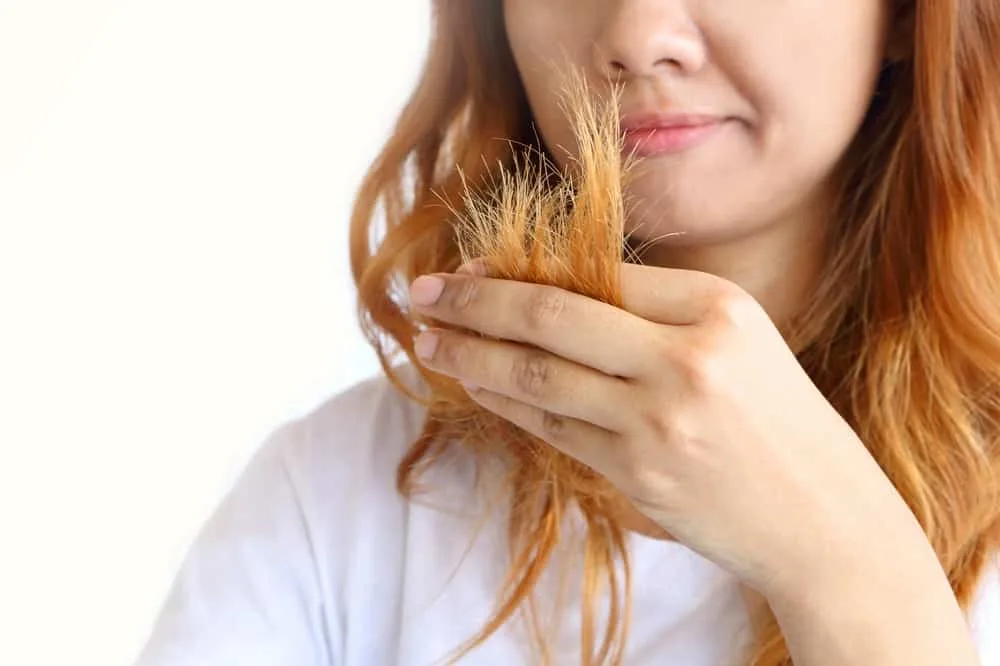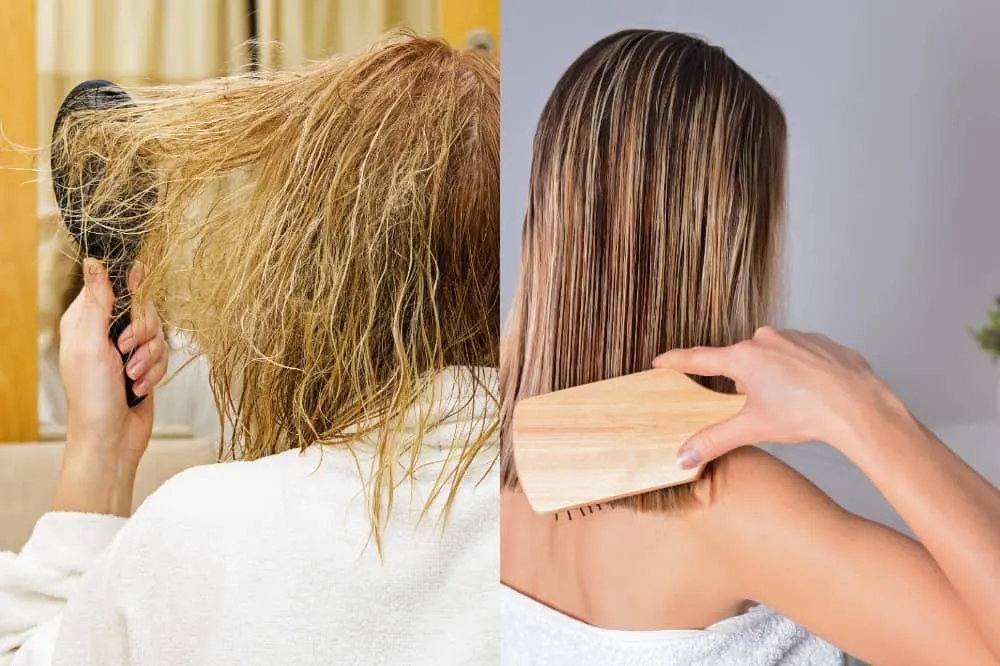You’ve just finished styling your hair and notice hair loss or breakage — a lot more than you expected to. Whether it’s near your hairline or in an inconspicuous spot in a lower layer near the back of your head, it’s scary and worrisome to find hair that looks like you might have fried it.
While it may be easy to tell the difference between damaged hair and healthy hair for professionals, many of us may rush to conclusions and assume, well, guess I fried my hair. The truth is, sometimes it’s difficult to distinguish fried hair vs. healthy hair, and maybe your hair isn’t as damaged as you think.
Difference Between Fried Hair and Healthy Hair
So, have you just fried your hair? We’re going to break down the differences between healthy and fried hair so you can tell for sure the state of your hair and decide how to address it.
Keep reading to learn all the tell-tale signs that hairstylists use to tell the difference between damaged hair and healthy hair!
The Stretch Test

People with color-treated hair need to be able to stay on top of determining the state of their hair. When it comes to healthy hair vs. damaged hair, one of the easiest ways to tell the difference is the stretch test.
If you’ve noticed your hair falling out recently, that can be pretty alarming. But before you jump to conclusions about the cause, take some of the lost hair and stretch it between your fingers. Pull the strand until it breaks.
While elasticity, especially for wet hair, is normal and healthy, if you notice a distinct stretching of your hair similar to something you’d get from a rubber band, then there is definite damage involved.
On the other hand, if it also breaks without any stretching whatsoever, you’re probably dealing with extensive dryness.
This is because the strength of your hair is determined by the protein bonds within the strands themselves. When these break down, the natural flexibility of your hair is compromised. If your hair is too stretchy, seek out a protein treatment.
If the hair snaps and breaks with no stretching, then consider a nourishing and hydrating moisture hair mask.
Breakage vs. New Growth

It’s also easy to panic when you look around your hairline or near your part and see lots of short, baby hairs sticking up. At first glance, this often seems like breakage and flyaways that might be caused by heat damage.
But this isn’t always the case. A certain amount of hair loss is normal, and during stressful times in our lives, or when our bodies are dealing with hormone changes, we can experience a great deal of upsetting, albeit natural, hair loss.
Hair loss doesn’t have to last forever, though. And when these hairs grow back, they do so in full strength, often around your hairline and in places that make them look like breakage or flyaways.
So how do you tell the difference between new growth and fried hair? First, check the texture. If the shorter hair is soft and similar to the texture of your natural hair, then it’s a good chance you’re experiencing new growth(aka baby hair) .
But if the short hair is dry or brittle, you’re probably dealing with breakage and damage. This often occurs throughout your head. If you pull your hair back into a ponytail, and most of your short hairs reveal themselves, then damage is a real possibility as well.
New growth usually happens close to your hairline around the edges of your face, but breakage can still occur in these areas from pulling your hair back too tightly too often or over-using heat styling in these areas. So always check for texture first.
Split Ends

Remember the good old days when we thought the worst thing we had to deal with was split ends? Whether that time for you was high school or middle school or before, one of the first ways we learned to identify damage to our hair was through split ends.
And that information is still accurate today. Whether you have virgin hair, bleached hair, or just hair that sees lots of blow-drying, curling, or straightening, split ends are a tell-tale sign that your hair needs a break from a damaging routine.
Since your hair grows from the scalp, the ends of your hair are the parts that have been around the longest and are subject to the greatest amount of adverse conditions. When the ends of your hair become dry, the protein bonds break down, making your strands come apart in a way, a little like a rope unraveling.
You can check individual strands for split ends, but if your hair is truly damaged, you’re likely to be able to tell by looking at your hair overall. If it looks frizzy and dry, but that appearance is concentrated mainly to the ends of your hair, then you likely have split ends.
If you notice this kind of damage, schedule a trim with your stylist to chop off the split ends and damaged deadweight and reveal fresher, healthier strand ends.
The Brush Test

Another great way to tell if you have legitimately fried hair is by noticing your experience with it when wet brushing.
Of course, if you have bleached or color-treated hair, then you already know that wet brushing is a nightmare without conditioning beforehand. This is because hair must be damaged in a way to get it to hold a new color.
So if you wash your hair and get out of the shower to find a verifiable rats’ nest atop your head that can’t be tamed with a brush and leads to a headache, then there’s a good chance you have quite a bit of damage.
This occurs because the cuticle of healthy hair is smooth, allowing strands to glide past each other without matting. When hair becomes damaged, the hair cuticle is opened, causing a microscopic result almost akin to the two sides of velcro sticking together.
If your hair can’t pass the brush test, consider a nourishing deep conditioner or treatment to restore bonds in your hair.
Final Thoughts
If your hair looks damaged to you, try some of these tests first to determine whether or not your hair is truly fried. If you can’t pass the stretch test or the brush test and notice split ends and breakage instead of new growth, you might have fried your hair.
But even so, don’t despair! There are multiple ways to help restore and nourish your hair to prevent further damage and restore its health to get you back to shiny, strong hair and heightened confidence.
